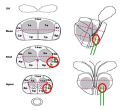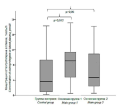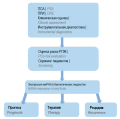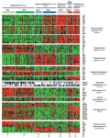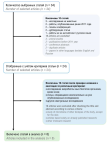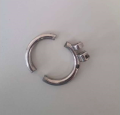EDITORIAL
This article summarises the new amendments to the American Urological Association guidelines on Urethral Stricture Disease (2023) and comments thereon. The author presents a view on a few issues based on the experience of management more than 10.000 patients with urethral strictures.
The prospects for the use of artificial intelligence (AI) are one of the most discussed topics in medicine today. The very possibility of having an omniscient virtual assistant at hand soon seems incredibly tempting, so it seems quite normally to see numerous reports on the application of each newly emerging advanced neural network technology in various fields of medicine and biotechnology. Of course, the emergence of ChatGPT caused the greatest public outcry in recent times, because the new natural language processing algorithm underlying it has allowed human to bring communication between man and machine to a whole new level. Of course, despite the myriad benefits of using AI, the use of ChatGPT and other AI tools in medicine raises many ethical and legal questions. However, it is worth remembering the history of the emergence of any other breakthrough technology to accept the existing controversy as an integral part of progress. The desire of a person to make his work easier and shift part of the work onto a computer always makes him take a step forward in the development of technologies, which, in the end, do not allow a person to work less, but make him work in a new way.
ORIGINAL ARTICLES
Introduction. Varicocele is one of the frequently identified and corrected causes of male subfertility. However, varicocele correction results in improved sperm quality only in 60 – 70% of subfertile men. At the same time, it is not completely clear which semen parameters improve to a greater extent, and what is the proportion ofpatients with an improvement in parameters to normozoospermia.
Objectives. To assess qualitative changes in semen after microsurgical varicocelectomy according to WHO 2021 Laboratory manual of semen analysis.
Materials & methods. This study analysed qualitative changes in sperm in infertile men after varicocelectomy. All patients had a clinical varicocele, for which microsurgical varicocelectomy was performed. The study included 100 subfertile men with varicocele and abnormal sperm parameters.
Results. In the postoperative period (after 6 months), the main semen parameters increased significantly. Also, the proportion of patients with isolated asthenozoospermia decreased by 22% (p < 0.05), the proportion of patients with oligoasthenozoospermia decreased by 14% (p < 0.05). The proportion of patients with normospermia was 35% (p < 0.0001). In patients with oligoasthenozoospermia significant improvement in sperm to normospermia was observed in 19% of cases.
Conclusions. Varicocele repair leads to an improvement in the quality of the ejaculate in subfertile men with palpable varicocele and pathozoospermia, with the most significant improvement in sperm motility. However, only in a third of patients semen quality improved to normal levels. Additionally, varicocelectomy demonstrated high efficacy in patients with oligoasthenozoospermia.
Introduction. The skill of puncture of the kidney pelvicalyceal system is one of the basic urological skills, as it is used for various surgical interventions. There are different training models, from laboratory animals to virtual reality simulators.
Objective. To evaluate a non-biological model of the pelvicalyceal system puncture simulator UroATOM (“Alfa-Rhythm”, Russian Federation) and to compare it with a virtual reality simulator PERC MentorTM (“Simbionix”, Beit Golan, Israel).
Materials & methods. The results of fluoroscopic guided puncture training were analyzed among 50 physicians. The specialists were divided into two equal groups by experience: group 1 — beginners, group 2 — experienced urologists. In phase 1, both simulators were evaluated by the physicians using Likert questionnaires. In phase 2, the puncture results in beginners were evaluated before and after the UroATOM simulator practise.
Results. Comparing the indices of both simulators showed that UroATOM was rated as more convenient to use (p = 0.0001) and cheaper (p < 0.0001). The analysis of the puncture performance by "beginners" before and after UroATOM training revealed a statistically significant improvement in the performance. The puncture time index improved by 79 seconds. The index of fluoroscopy duration decreased by 40.9 seconds. The number of puncture attempts decreased by 1.4 times. The amount of contrast decreased by 5.4 ml.
Conclusions. The UroATOM simulator is effective for training young specialists in fluoroscopy-guided renal cavity puncture.
Introduction. The prevalence of urinary stone disease (USD) historically considered a predominantly male disease. It has been rising over the last several decades with the rate of increase being higher among females. However, factors such as stone localisation, size, and density are usually analysed in postureteroscopic complications, and reports on gender-specific differences in the treatment of USD are scarce.
Objective. To investigate the impact of gender differences on treatment success, intraoperative and postoperative complications in patients undergoing ureteroscopy.
Materials & methods. A total of 300 patients with USD, who were performed ureteroscopic interventions in the period from September 2021 to November 2022 in Yudin City Clinical Hospital. Depending on gender, patients were divided into two groups — 194 (64.7%) men and 106 (35.3%) women. Recurrent USD was observed in 71 (36.6%) cases in Group I and in 45 (42.5%) cases in Group II, with an average recurrence time of 4.3 and 6.3 years, respectively. Male and female patients have had stone location in the upper third in 14.4% and 18.9% of cases, in the middle third in 18% and 6.6% (p = 0.005), in the lower third in 36 .1% and 49.1% (p = 0.04), in the intramural ureter in 28.9% and 21.7%, and in several localisations in 2.6% and 3.8% of cases, respectively.
Results. The duration of surgery did not differ in both groups and composed 41.6 minutes. Internal ureteral stent placement was in 37 (19.1%) male patients and in 14 (13.2%) female patients. Based on specialised postureteroscopic lesion scales such as PULS and Satava, the percentage of complications in Groups I and II was 2.1 and 2.8 and 4.1 and 9.4 (p = 0.03) respectively.
Conclusion. The development of acute renal colic in women with patients less intensity than in the male group leads to hospitalisation in the delayed period. In female patients, the number of postureteroscopic complications has higher rates due to the size and density of the stone and its location.
Introduction. Radical prostatectomy (RP) is the "gold standard" treatment for patients with prostate cancer (PCa). Obviously, one of the predictors actively studied of biochemical recurrence is the presence of a positive surgical margin.
Objective. To develop and initially evaluate the techniques of targeted urgent intraoperative histological study of fresh frozen sections during radical prostatectomy.
Materials & methods. This study was carried out within the framework of the academic research at the University Clinic of Urology, Pirogov Medical University. We conducted a prospective clinical study of fresh frozen tissue samples during laparoscopic RP (LPR). The subject of the investigation are 112 patients with PCa underwent LRP (extra- and transperitoneal approaches) by one surgeon in 2021 – 2022. Group A involves 62 patients underwent intraoperative examination of fresh frozen sections based on preoperative data (MRI, FUSION biopsy). Group B (control retrospective group) consists of 50 patients with standard surgery without fresh frozen sections.
Results. The accumulation of new data allows us to say that the presence of an oncological process was found in the gross specimen obtained by performing cito histology in 42 (67.7%) patients. A primary positive margin was found in 12 (19.4%). Compared to group B, a positive surgical margin was found in 7 (14%). Migration of surgical margin status from initially negative to finally positive margin found in 2 (3.3%). Migration of status from primary positive to negative surgical margin was found in 2 (3.3%). The specificity of the method (true negative margin) was determined in 48 of 50 patients (96.1%), and the sensitivity (true positive margin) was determined in 10 of 12 patients (83.3%). The average time to complete the technique of rapid histological study was 27 minutes.
Conclusion. Since the work carried out, we have come to the following conclusion that the obtained results indicate the effectiveness and expediency of using targeted urgent histological study during RP.
Introduction. Primary urethral pain syndrome (PUPS) is a part of chronic primary pelvic pain syndrome with predominant localisation of pain in the urethra. The pathogenesis of PUPS has not been adequately studied and there are no unified guidelines for the prevention and treatment of this condition. It is known that one of the main factors in the development of chronic pain is a violation of regional blood flow.
Objective. To identify the features of blood supply of urethral tissues, as well as to assess the concomitant changes in the connective tissue in patients with PUPS.
Materials & methods. The study included 98 patients: 78 patients with primary urethral pain syndrome (group "PUPS"), without clinical manifestations of inflammation; 20 patients with stones of the upper urinary tract without pyelonephritis, in which the urethra is taken as the norm (group "N"). The hemodynamics of the urethral tissues was studied using transvaginal ultrasound (TVUS) and laser Doppler flowmetry (LDF). Changes in the blood supply to organs often lead to disruption of tissue structure; therefore, in vivo cross-polarisation optical coherence tomography (CP OCT) and ex vivo nonlinear confocal microscopy were included in the study.
Results. In the PUPS group, the LDF method revealed a violation of the neurogenic regulation of the tone of the microcirculatory vascular wall of the urethral tissues with a predominance of passive regulatory components. The analysis of the LDF parameters by the method of principal components made it possible to establish the division of data into several clusters, which indicates a different pathogenesis of microcirculation disorders in the tissues of the urethra. The TVUS method in the PUPS group revealed an increase in resistance to blood flow in the blood vessels of the urethra and paraurethral plexus, blood stasis in the veins of the small pelvis in 19% of patients. Violation of the urethral blood flow leads to structural changes in tissues: using nonlinear microscopy, it was found that with PUPS in the urethral connective tissue, collagen fibres are quantitatively larger relative to elastic ones, they are more uniform in thickness, and have a co-directional arrangement. These data correlate with the results of an intravital CP OCT study, during which fibrosis of the subepithelial connective tissue structures was revealed.
Conclusion. TVUS and LDF made it possible to reveal the presence of microcirculatory and, as a result, structural changes in urethral tissues in vivo. The inclusion of these methods in the diagnostic algorithm will provide more information about the main links in the pathogenesis of PUPS.
Introduction. In recent years, the clinical and practical interest in malignant neoplasms and diseases of the cardiovascular system has been extremely high. These nosologies are the leading causes of hospitalisations and deaths worldwide.
Objective. To assess the prevalence of coronary heart disease and risk factors among patients with newly diagnosed prostate cancer, as well as to identify their relationship with the severity of prostate cancer.
Materials & methods. The study included 140 newly diagnosed prostate cancer (PCa) patients with a median age of 65 [62; 70] years. All patients had the level of prostate-specific antigen, pelvic MRI, prostate biopsy with determination of Gleason score, all patients filled out the questionnaire of the International Index of Erectile Function (IIEF-5). Depending on the presence of coronary heart disease (CHD), all patients were divided into two groups: Group 1 — 94 (67%) PCa patients without CHD; Group 2 — 46 (33%) PCa patients with CHD
Results. In a comparative analysis, the groups did not differ in indicators such as age, BMI, prostate volume, incidence of diabetes mellitus type 2, and lipid status level. However, in PCa patients with CHD, erectile dysfunction was statistically significantly more pronounced than in patients without CHD (10 vs 18 IIEF5 points, p = 0.03), respectively. In terms of PSA levels, it turned out that in Group 2, this indicator was significantly higher than in Group 1 (15.8 ng/ml vs 10.1 ng/ml, p = 0.03), respectively, which indicates possibly more high malignancy of the process. Furthermore, in Group 2, patients with a high grade PCa according to the classification of The International Society of Urological Pathology (ISUP) 4 / 5 were statistically significantly more common compared to patients of Group 1 (12 (26%) vs. 10 (11%), p = 0.01), respectively. In a comparative analysis of patients depending on the risk of a possible PCa recurrence of , which was taken into account by such parameters as PSA level, Gleason index + ISUP grade, it turned out that in Group 2 there were statistically significantly more patients with a higher risk of PCa progression compared to Group 1 (20 (44%) vs 26 (28%), p = 0.02), respectively.
Conclusion. PCa patients with concomitant CHD are characterized by a higher waist circumference, they had lower indicators of erectile function, a more pronounced comorbid background, and more often had a history of stroke. In addition, PCa patients with CHD had a high grade PCa and a higher risk of PCa progression.
Introduction. In our earlier research on the role of genetic factors in the development of recurrent urolithiasis, a significant relationship was found between the presence of single-nucleotide polymorphism rs3134057 in the osteoprotegerin (OPG) gene and the development of this disease. The above-mentioned single-nucleotide polymorphism is intronic, therefore, it is unable to involve the structure and functions of the OPG but to affect its expression. Thus, the study of serum OPG level may have diagnostic significance in recurrent urolithiasis.
Objective. To study the relationship of serum OPG level with the presence of recurrent urolithiasis, as well as the effect of single nucleotide polymorphism rs3134057 on the OPG level.
Materials & methods. One hundred and fifteen volunteers were included in the study from January 2021 to January 2022. Of the 115 participants, 45 (main group #1) were diagnosed with recurrent urolithiasis and localisation of the main stone in one of the ureters, 28 participants (main group #2) had previously suffered a single episode of acute renal colic followed by surgical treatment or stone self-discharge and were stone-free at the time of the study. Forty-two control group respondents were free of urolithiasis, including family history of urolithiasis. The serum OPG levels was determined by enzyme immunoassay using the Human OPG ELISA kit ab100617 ("Abcam plc", Cambridge, UK) according to the manufacturer's advice.
Results. The analysis revealed that the serum OPG levels were significantly higher in the main group #1 than in the control group (median: 9.02 vs. 3.635, p = 0.012). When analyzing the relationship between the concentration of OPG in serum and the AA + AG genotype versus GG according to rs3134057 of the OPG gene, no statistically significant difference was found (p > 0.05). The same result was obtained when comparing groups with AA vs. AG vs. GG genotypes (p > 0.05).
Conclusion. The present study showed that an increased serum OPG level in patients with recurrent urolithiasis may indicate the presence of a relapse of the disease. Further study in large samples will finally confirm the significance of OPG as a marker of relapse, including in genetically determined forms.
REVIEWS ARTICLE
Physiotherapy is a treatment method for a wide range of diseases of various organs and systems. Its efficacy and practicability are of the great discussions during the past few decades. In urology, this method is used for treatment of erectile dysfunction (ED) caused by a violation of the trophism of genitalia due to radical prostatectomy, atherosclerosis, diabetes mellitus, Peyronie's disease. Shock wave therapy based on the remote action of a low-intensity focused acoustic wave is one of the widely used effective physiotherapeutic methods for the treatment of vasculogenic ED. The main effects of shock waves are neoangiogenesis, nerve fibers regeneration, deceleration of the cavernous fibrosis and reduction of the sympathetic outflow. Some technologies (e.g. radio waves) in addition to those effects also warm the tissues, what accelerates metabolism and improves regenerative processes. All shockwave and radiowave technologies have already demonstrated their efficacy compared with sham control. However, in the few comparative studies, no significant difference was found in efficacy between different technologies. Clinical guidelines consider physiotherapy only as an alternative treatment for patients with mild vasculogenic ED who are refractory or unresponsive to oral vasoactive therapy. Nevertheless, some studies make it possible to judge the efficacy of physiotherapy for treatment of patients with either etiology of the ED. The result of the ED treatment does not depend on the number of treatment courses, their duration, the number of pulses per course and the periodicity of therapy sessions. Also, the original studies have some major shortcomings (i.e. a large percentage of patients dropping out of follow-up). These factors cast doubt on the organotropism of physiotherapy. So, additional comparative studies are required to determine the optimal dosing regimen and to explore the influence of physiotherapy organotropic and psychological components on the results of the treatment. The study aimed to summarize the currently available data evaluating the efficacy of different physiotherapeutic technologies, to compare the efficacy of different technologies for ED treatment.
Diagnosis and treatment of prostate cancer (PCа) are associated with the serum level of prostate specific antigen (PSA). However, certain prostate diseases such as benign prostatic hyperplasia (BPH) and prostatitis can also affect PSA levels. The low specificity and sensitivity of PSA leads to a "unnecessary" prostate biopsy, which certainly makes this diagnostic method a controversial screening test. As a result, the discovery of new non-invasive molecular biological markers are necessary for the diagnosis, treatment, surveillance and prognosis of patients with diseases of prostate. This review aims to evaluate the "benefit" of miRNAs as molecular biological markers of BPH and PCa differentiation.
Introduction. Bladder cancer (BCa) is one of the most common oncological diseases with many relapses and progressions, which requires more and more new ways to solve this problem.
Objective. To analyse of existing data on the molecular and genetic features of BCa classification based on them, assessment of the possibility of its introduction into clinical practice as a criterion for recurrence and progression.
Materials & methods. We analysed the data of studies on molecular subtypes of BCa published in PubMed, Scientific Electronic Library of Russia (eLibrary), Scopus, Medline, EMBASE, websites of professional associations. We searched the following keywords: "molecular subtypes of bladder cancer", "non-muscle invasive bladder cancer", "molecular subtypes of bladder cancer" "non-muscle invasive bladder cancer". The paper focuses on the current classifications and the April 2020 consensus, which can be universal and applied in everyday practice.
Results. During the analysis of the obtained data, it was revealed that the molecular and genetic heterogeneity of BCa is reflected not only in the proteins expressed on tumor cells, but also in the response to treatment and prognosis of the disease.
Conclusion. Molecular and genetic markers seem promising for introduction into wide clinical practice to adjust treatment and assess the risks of recurrence and progression.
The study of the cutaneous microbiota/microbiome of the male genital is relevant not only to understand "normality" for this biotope but also to correctly interpret the results obtained from patients with infectious-inflammatory diseases or postoperative infectious-inflammatory complications of penile skin. The study aimed to generalize and critically analyze data on microbial contamination of various areas of the penile skin by conducting a systematic review of publications. The search led to the selection of eight articles published in 2011 – 2023 that investigated the microbiota / microbiome features of the penile skin in health and some diseases. Thus, in sexually active healthy men, the penile skin microbiota / microbiome partly reflects the vaginal microbiome of sexual partners. After unprotected sexual contact, the frequency of detection and the number of Lactobacillus increase in the penile skin microbiota. In general, Corynebacteriaceae dominate on the penile skin, while Prevotellaceae, nc Clostridiales, Porphyromonadaceae, Staphylococcaceae, Bifidobacteriaceae, Lactobacillaceae, Veillonellaceae, Anaerococcus are less frequently recorded. Circumcision has a significant effect on the bacterial diversity of the penile skin. Although data regarding the penile skin microbiota/microbiome in various diseases are scarce, certain interactions have been noted. Thus, in healthy sexually active male partners of women with bacterial vaginosis, the number of bacteria associated with bacterial vaginosis increases and Corynebacterium decreases. In HIV-positive men, Staphylococcus, Faecalibacterium, Strenotrophominas, Jonquetella, Ruminococcus, Roseburia, Pseudochrobactrum and Lamia predominate on the penis skin. It is also noted that circumcision reduces the risk of HPV and HIV infections. Knowledge of not only the bacterial, but also fungal diversity of the penile skin microbiota is of great clinical importance, because conditionally pathogenic yeast-like fungi under certain conditions can cause a few diseases. Thus, this review analyses the microbial composition of penile skin in normal and some diseases, revealing a great gap in current knowledge of penile skin microbial assemblages. Studies are needed to better understand the microbial composition of normal penile skin and its impact on the results of reconstructive and plastic surgeries using penile skin.
Clean intermittent self-catheterisation (CISC) was for many years considered the most preferable method to drain the bladder in patients with lower urinary tract disfunction. However, concerning long-term CISC, the adherence rate to the method was limited due to complications, psychological barriers, physical disabilities and social disadaptation. According to results of last studies hydrophilic catheters decrease the prevalence of recurrent urinary tract infections (UTIs) and urethral trauma. Thereby patients with voiding difficulties after spinal cord injury (SCI) could gain a better quality of life and acceptance of CISC. New coated catheters improved self-catheterisation techniques, personalised management, and better access to help and advice reduced the frequency of side effects. Furthermore, the percentage of unsatisfied patients who rejected the method fell. Consequently, CICS remains the most useable clean technique to drain the bladder regarding neuro-urological patients. Most of physicians have already admitted, that CICS seems to be a safe and easy-to-learn method. In this review we aimed to analyze all pros and cons of CICS relating to patients with lower urinary tract dysfunction after SCI.
Currently, artificial intelligence (AI) has developed greatly and has become the subject of active discussions. This is because artificial intelligence systems are constantly being improved by expanding their computing capabilities, as well as obtaining massive data. Due to this, AI can help to set a diagnosis and select the most effective treatment. The study aimed to analyse the possibilities of AI in the diagnosis, treatment and monitoring of patients with renal cell carcinoma (RCC). AI shows great prospects in the diagnosis urinary system lesions, in the ability to differentiate benign and malignant neoplasm (due to machine learning systems), as well as in predicting the histological subtype of the tumor. AI can be used at the intraoperative stage (thanks to the integration of virtual 3D models during surgical interventions), which reduces the frequency of thermal ischemia and damage to the kidney cavity system. AI finds its application in histopathological evaluation: the AI model reaches 100.0% sensitivity and 97.1% specificity in the differential diagnosis of normal tissue from RCC. AI model algorithms may be used to identify patients at high risk of relapse requiring long-term follow-up, as well as to develop individual treatment and follow-up strategies. All the above proves the possibility of using AI in all stages of the management of patients with RCC. The implementation of AI in medical practise opens new perspectives for the interpretation and understanding of complex data inaccessible to clinicians.
CLINICAL CASES
Zinner’s syndrome is a rare congenital urogenital anomaly characterised by the triad of seminal vesicle cyst, ipsilateral renal aplasia, and seminal duct obstruction. According to the published data, the incidence of seminal vesicle cysts with ipsilateral renal agenesis is 0.0046%, but the true incidence appears to be higher. The article presents a rare clinical case of patient K, 17 years old, followed since birth with a solitary right kidney. The patient was repeatedly examined (ultrasound, cystography, urography, abdominal MRI, pelvic CT). The boy was admitted to our clinic with the diagnosis of "Solitary right kidney" and pelvic cystic formation detected according to the last CT scan. MRI examination of the small pelvis, cystoscopy, diagnostic laparoscopy, puncture of the cystic mass were performed. The diagnosis of "Zinner's syndrome" was made. The size of the cyst did not change during follow-up.
Introduction. Today absorbable suture material as well as plastic nonabsorbable clips are widely used for surgical haemostasis and stabilisation of sutures during minimally invasive operations, however, they are capable of potential and spontaneous migration into the lower and upper urinary tract.
Objective. In this paper, we present clinical cases of clip migration after radical prostatectomy and renal resection.
Clinical cases. Clinical cases of spontaneous clip migration after the two most common minimally invasive interventions: kidney resection with subsequent removal of a foreign body after the use of lithokinetic therapy and a case of hemostatic material migration after robot-assisted radical prostatectomy. The literature review is also available.
Conclusion. Excessive use of non-absorbable plastic clips around their close contact with the kidney cavity or the bladder wall should be avoided to achieve adequate hemostasis during minimally invasive methods of treating patients.
Penile entrapment is a rather rare pathology and requires urgent treatment to preserve the organ function. The article presents a clinical case of entrapment of the penile root and scrotum by a metal ring with tissue changes like a pressure sore directly under the ring. Possible methods of emergency surgical treatment in this urgent situation are discussed.




